A last second call to arms from Street Gourmet LA founder Bill Esparza led us to Ensenada and Congreso Ensenada Gastronomica, a conference that convened in the Hotel Coral event space, where top chefs and starstruck culinary students from across Mexico converged for a full program of cooking demos. This was a drop everything day-trip that was well worth it.
Lauded Restaurante Pujol chef-owner Enrique Olvera flew from Mexico City and worked with sous chef Alejandro Gomez to prepare milpa, a cutting-edge corn dish that’s based on classic Mexican street food. Flat screens that provided close ups of the action (and Esparza clarification) proved invaluable, as my understanding of the Spanish-only speeches was limited to approximately 30%. Regardless, Chef Olvera explained that he works with the farmers in Xochimilco to procure ingredients, including baby corn, which he skewered, dipped in egg yolk and coated in crushed pumpkin seeds. The corn entered a tube that rested in a gourd piped with aromatic smoke.
Another dish was a nouveau chile relleno inspired by famous Spanish chef Juan Mari Arzak. Chef Olvera roasted onion puree with tomato and honey. He placed cloves, laurel and chipotle into a French press, followed by his hot tomato sauce. He waited for the flavors to steep before plunging the French press and completing the sauce.
Chef Olvera simultaneously worked on multiple dishes, preparing aguachile before placing a capillada (ball of egg batter) in a bowl, topping it with cilantro and tweezing on epazote. He added a pool of black bean puree with onion and salt to a wood plank and layered on cotija, avocado, tomato, bollitos de maiz (musket-sized corn balls) and a garnish of flor de calabaza (squash blossom).
After each demo, chefs transitioned to a table out front to sign autographs for dozens upon dozens of admirers. As further testament to the reach of each chef, another table next to the stage hosted fully formed dishes. Camera wielding fans surrounded and photographed every plate, including Chef Olvera’s chocolate dessert, with LudoBites-like intensity.
Juan Mari Arzak was once again a key figure as Mikel Alonso, chef-owner of Biko, a cutting-edge restaurant in Mexico City’s Polanco neighborhood, took the stage. He was born in Biarritz, France, spent 26 years in Spain and the past 14 years in Mexico. He speaks with a Catalan accent and specializes in gastronomia Basqua (Basque gastronomy).
He discussed the thin line between easy and difficult prior to preparing pink snappers fillets with rajas (pimientos and chilies). In Spain, Piperade is typical, with pimientos and onions.
Chef Alonso poured Spanish olive oil into a deep steel pan, along with rough cut red and white onion, pimiento verde and pimiento rojo. Collectively, this is known as puncao [poon sow]. Into another pan, he added “muchitos” olive oil, garlic and minced onions, followed by mussels. In went vinegar and dry white wine to complete the escabeche. To paraphrase Chef Alonso’s view on escabeche: Escabeche adds salivation, and without salivation, there is no flavor.
The layered, decidedly non-molecular demo continued as Chef Alonso added butter, cream and sea salt to peppers and onions. He started a shallow pan with olive oil and placed two cloves of garlic and fish fillet – flesh down – in the pan, along with a shower of minced cilantro.
He cut a red puck of agavar de ensalada (fish gelatin) in half and plated half of it with three shelled mussels. Chef Alonso then greased another pan with cheese and scraped off the burnt bits to form chicharron de queso, which he plated with shell-free mussels.
The end result was a fish fillet plated with pieces of fish gelatin, three shell-free mussels, rajas, a plume of chicharron de queso. For texture and flavor, he added chicos (fried corn kernels) and salsa (the cream from rajas). Chef Alonso’s finishing touch was the closest he came to molecular, adding maltodextrin, a tapioca powder, to a mixing bowl and mixing it with olive oil until it started to bead up. He finished with beads and flor de izote (purple flower petals) and marigolds (yellow petals). Chef Alonso said, “En un plato, quiere tener todos los flavores,” which translates from Spanish as” On a plate, you want to have all of the flavors.” It didn’t look like any flavor was lacking.
Benito y Solange Molina are Mexican TV stars and own two restaurants: Manzanilla in Ensenada and Silvestre, a campestre in Valle Del Guadalupe. Muelle Tres recently changed hands. Benito previously cooked at Four Seasons in Mexico City. She attendee culinary school in Charlotte.
They shelled clams and paired them with black beans and pork, a “Combinacion de mar y tierra increible” [incredible combination of sea and land]. They created what we imagined to be bold flavors by frying minced Iberico fat in olive oil, adding crumbled beef tail meat, onions and dried chilies, which sizzled in the pan, gaining color. Benito y Solange added black beans, and after they absorbed the base flavors, integrated clams. They plated with a squiggle of olive oil.
Sardines are easy to come by in Ensenada, the couple’s home base. For their next dish, they sourced marinated sardines, canned nearby Manzanilla. As we learned, you’ll smell the canneries on the drive from Rosarito to Ensenada. Benito scraped off the skins and deboned the sardines. While pasta boiled, into a pan went olive oil, kalamata olives, dried chilies (ancho, cascabel, chiltipin, guajillo), along with diced tomato, rigatoni, which all received a healthy tossing. The couple dressed their second dish with microgreens and squiggles of olive oil.
After lunch, we had the opportunity to witness a cooking demo from chef Arturo Fernandez, who opened a restaurant called LAOS in Merida after becoming the first Mexican chef to work at El Bulli.
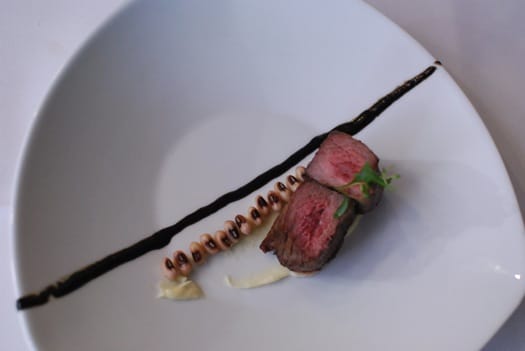
He prepared platano macho, venado (venison) in foie gras sauce…
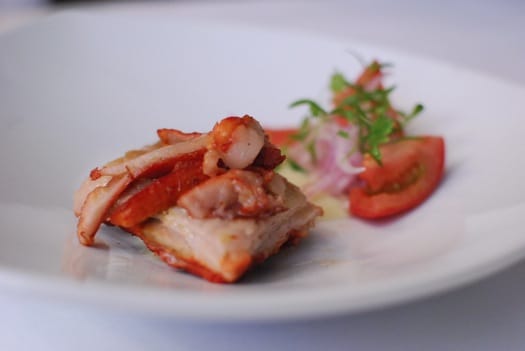
…and his version of cochinita pibil, with sous vide pork pressed between a pan and bowl.
Aquiles Chavez is a famous chef from Tabasco that Esparza described as the Emeril of Mexico, with dreadlocks and a well manicured, pointy tipped moustache.
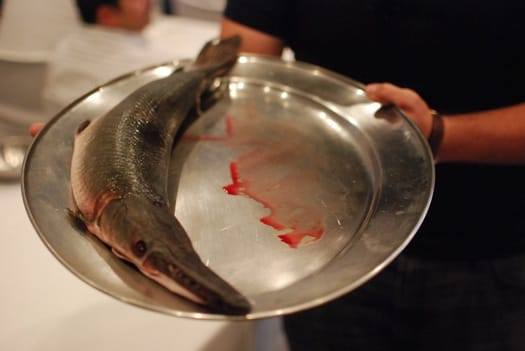
He’s also a man who brought the prehistoric bottle nosed fish from his home state – pejelegarto – that has been known to walk on land. It’s an amphibian and looks kind of like a tiny finned crocodile. This may be the missing link, and he cooks it on a regular basis. In this case, Chef Chavez shoved a wooden stick down its throat and grilled it. It’s called garfish in the U.S., where it lives in Florida and Louisiana. He compared the species to sea bass and snook.
He created a salsa de semillas (sauce of seeds) that incorporated cacao and peanuts. He made sure to add manteca y sal (lard and salt) to masa when forming corn tortillas to add flavor and keep it from drying out.
Chile amax [amash] and chiltipin, the tiny green seeds of the chile, joined olive oil in a pan. He crushed the results with salt in a molcajete using a stone pestle. They apparently don’t use a molcajete in Tabasco, so he was out of practice. He added lime juice and red onion to complete the salsa.
Chef Chavez also produces Tortillas Tabasquenos, thicker corn tortillas formed with the palm instead of a press, so they weren’t flat.
He plated the pelejegarto on a banana leaf, cut a tortilla into eight triangles. Chef Chavez cut the entire grilled fish down the middle, peeled back both sides, dusted with salt from the Sea of Cortez, and dressed with salsa.
This was the only case where a chef actually allowed Congreso attendees to consume the finished product, and people swarmed the pelelegarto. The flaky white fish with fiery salsa and pita-like fish proved plenty satisfying.
Chef Chavez also mentioned other regional dishes, including salpicon, armadillo and iguana negro. Unfortunately (or fortunately), we were limited to prehistoric fish.


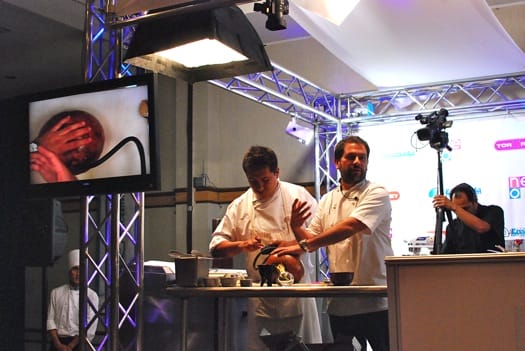
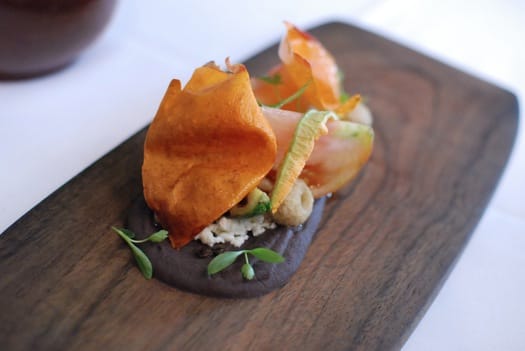
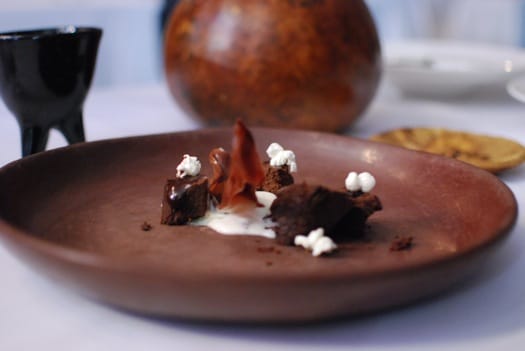

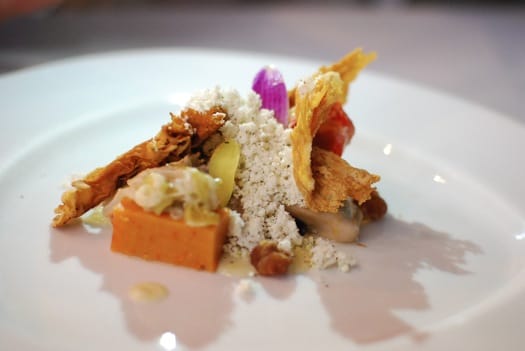
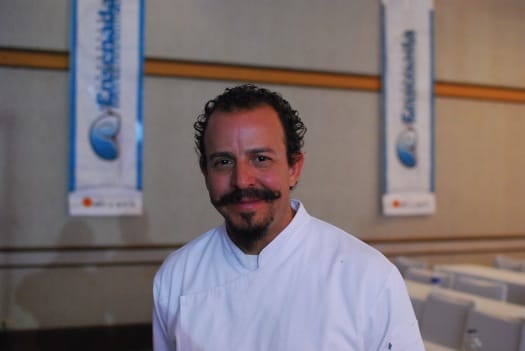

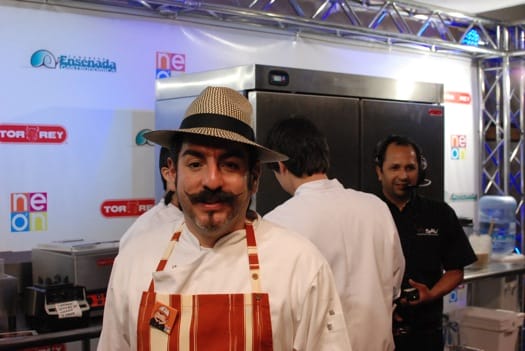
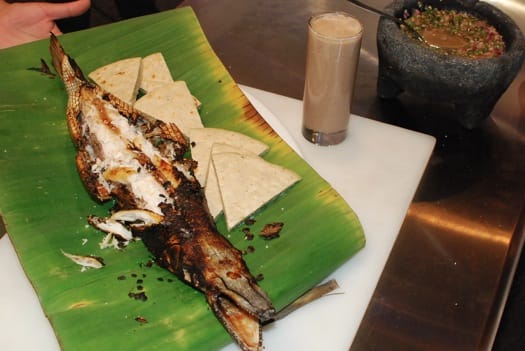

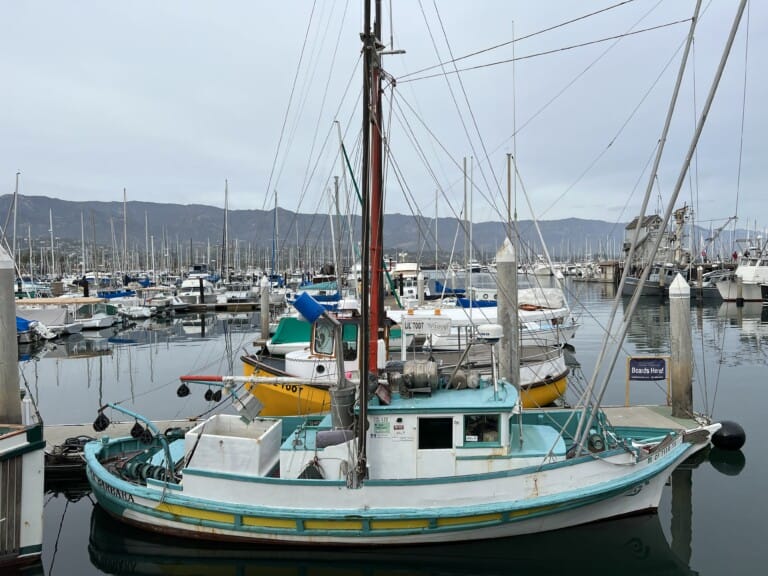





Leave a Comment